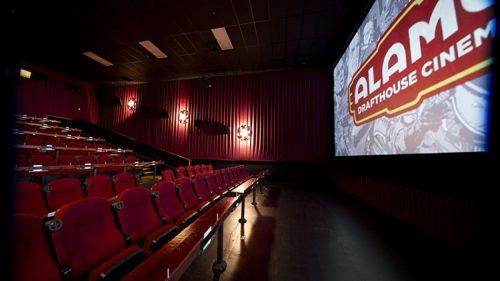Badass Sommelier: WITHNAIL & I and ’53 Margaux
Bruce Robinson’s 1987 Withnail & I is his ode to a life of blistering inebriation. The eponymous leads are portrayed by Richard E. Grant in his first role as the mad drunk skeleton Withnail and Paul McGann, all quiet London cool one second and manic frustration the next. Rounding out the cast are the great Richard Griffiths as Uncle Monty, alternating between flamboyantly aloof charisma and suffocating menace (and always tragically hilarious), and Ralph Brown as Danny the drug-dealer who, in a movie this endlessly quotable, gets all the best lines.
Writer and director Bruce Robinson based the story on his own experiences as a fledgling actor at the end of the ‘60s and appropriately sets the film in the last months of that decade as our two leads, perpetually unemployable actors and general layabouts, decide (after a particularly long bender) to go on holiday in the country.
What follows is a darkly funny and deeply cynical exploration of the paralyzing fear of adulthood and responsibility set against the death of the ‘60s, a decade of unfulfilled promise. It is a riotously funny movie from beginning to end, one that absolutely merits multiple viewings if only to catch every joke, and one that is ultimately as gray and melancholy as the cold skies that hang menacingly above the heads of our heroes.
Withnail & I is rightly regarded as a classic, with fans able and happy to quote nearly every line of the film’s memorable script. There is even a popular drinking game, where the audience is encouraged to drink along with Withnail (though I advise replacing the lighter fluid with vinegar, as Robinson and Grant did during the filming of that scene).
The movie is absolutely soaked through with booze, from cider to spirit to wine. One line of Withnail’s dialogue in particular stands out as comically and thematically ironic.
Denied cake (to soak up the booze, you know) at a tea-room, Withnail makes his famous demand. “We want the finest wines available to humanity. We want them here, and we want them now!”
Well, Withnail may not get his wish immediately, but when Uncle Monty arrives at Crow Crag unexpectedly he brings with him Withnail’s boon. From here on in, and until the very last frame of the film, Withnail gleefully partakes of the 1953 Château Margaux, considered by many to be the finest wine in the world.
Château Margaux, in the Médoc region on the left bank of the Garonne River in Bordeaux in the southwest of France, was among the first four wines to be granted the coveted Premier Cru status in the Bordeaux Classification of 1855. The estate has been producing wine since as far back as the 12th century, but it was in the 1700s that the wine really began to come into its own.
The affectionate term for Bordeaux, coined by British sailors in the 1600s, is Claret. Claret, which means “clear,” had to do with Bordeaux’s propensity to fade in color after only a few months in the bottle, ultimately having more in common with modern Rosés than what we think of as the thick, opulent, deep ruby red wines of today. The late 18th century was a time of great change in winemaking, with the grape skins that give red wine its color remaining in contact with the fermenting juice for prolonged periods of time. Château Margaux in particular was instrumental in developing the then-burgeoning idea of terroir (that the specific place and types of soil directly affect the final wine) that is now not just ubiquitous but paramount in winemaking today.
Wines from the commune of Margaux are defined by their distinctly perfumed aroma, refined elegance and tremendous power, none more so than those of Château Margaux itself. Like all wines from Bordeaux, Château Margaux is comprised of a blend of grapes, though the dominant varietal and the one that imparts its weight, distinctive notes of floral currant and characteristically velvety texture is the noble Cabernet Sauvignon. In the unique soils of the estate, the grape grows unlike anywhere else in the world and develops a unique and incomparable style.
As to Withnail’s 1953 in particular, this was an excellent year for Bordeaux, especially for left-bank Bordeaux like Margaux. Wine is, ultimately, the product of a crop. And just like any crop, some growing seasons are going to yield a better harvest than others. The grape in particular is extremely susceptible to its environment, which is the reason that vintage is so important when talking about wine.
The summer of 1953 was long and hot, dry and with plenty of sunshine. The grapes ripened slowly and steadily, and the season’s only real hiccup was a sudden storm in September that forced Château Margaux to postpone the harvest (though this did have the added benefit of allowing the grapes a little bit more time to ripen, a particular fear in Bordeaux as wine made from overripe grape tends to taste unpleasantly of stewed fruit, but one that was happily not founded here). The resultant bottling by Château Margaux is considered not just among the finest wines of that particularly good year, but as Withnail himself says, “’53 Margaux. Best of the century.”
And here we have the tragic beauty of that wine’s ultimate fate, and of the entirety of Withnail & I. The film ends with Withnail standing alone in the rain, drinking this wonderful Margaux (less of a drink and more of a piece of art and history) straight from the bottle, reciting the melancholy words of Shakespeare with only the wolves for company.
This was originally published in the "Cheers! A Celebration of Pub Life" issue of Birth.Movies.Death. See Withnail & I at the Alamo Drafthouse this month.



